Science
Frogs and Toads Together: Why do Amphibians Group Up?April 11, 2025

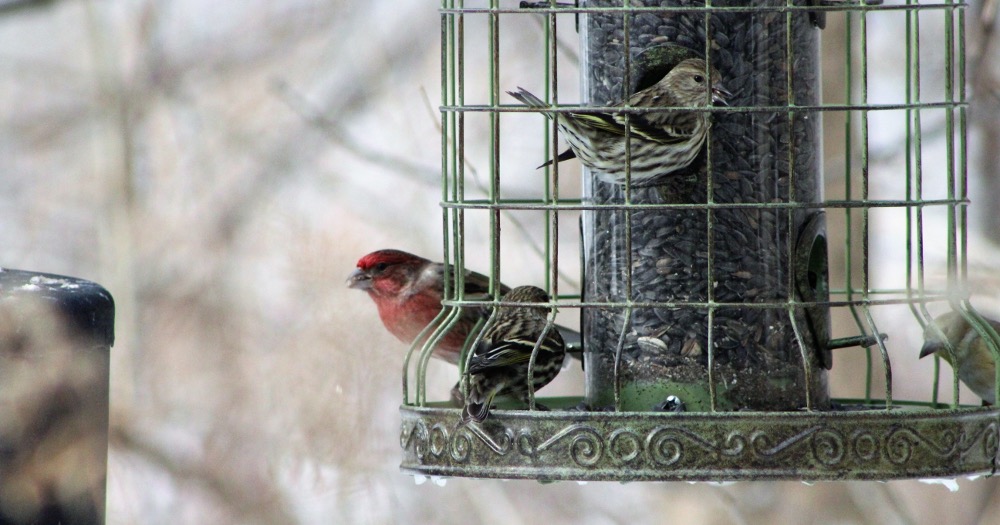
Have you ever looked at your assigned standards and thought, “what on Earth am I going to do to achieve this goal with my elementary students?” If we’re being honest, that’s how I feel about some of the social studies standards… Even with a science degree, I took a look at the Next Generation Science Standards and was a little perplexed by the standard 5-ESS3-1, “obtain and combine information about ways individual communities use science ideas to protect the Earth’s resources and environment.”
There are soooo many examples of science being used to help protect the Earth’s resources and environment but what can I do to make it as impactful on my students as possible? But then the answer hit me, use citizen science! If you’re unfamiliar with citizen science projects, they are projects that involve non-scientist participation in data collection and reporting for scientific research. So how is this applicable? Your students get to act like scientists by collecting data in a scientific way and then report it to the scientific community where it will be used to make important discoveries and decisions.
But which project would suit my students best? Enter the Great Backyard Bird Count. The Great Backyard Bird Count is a citizen science project that happens annually around the world and is 100% accessible to teachers and students everywhere. This project only happens once a year but is a great opportunity to show your students how they can get involved and make a difference with science. If you’re interested in using the Great Backyard Bird Count in your elementary classroom, read on for background on the bird count, when it takes place, how to get involved, picture books to help introduce the topic, materials that could be helpful to participate, and activities to do with your students.
Affiliate disclosure: As an Amazon Associate, I may earn commissions from qualifying purchases from Amazon.com. This is at no extra cost to you. If you’d like to learn more, check out my disclaimers page.
Don’t need all of the info? Use this list to jump to the stuff you need:
When is the Great Backyard Bird Count?
The Great Backyard Bird Count eBird Connection
The Great Backyard Bird Count Checklist
The Great Backyard Bird Count Rules
Picture Books to Introduce the GBBC
Helpful Materials for Taking Part
Creating a Bird Feeding Station
Field Guides for Identification
Scientific Tools for Data Collection
The Great Backyard Bird Count launched in 1998, powered by the Cornell Lab of Ornithology and the National Audubon Society. That year it was the first online citizen science project that focused on data collection about wild birds. It was also the first to display the results from the project in near real time. In 2009 Birds Canada joined the effort which expanded the project to include participation in Canada. In 2013, the project went global when the organizations began using eBird to report data. eBird is the world’s largest biodiversity-related citizen science project with billions of reports from around the world making it a fantastic integration into the project.
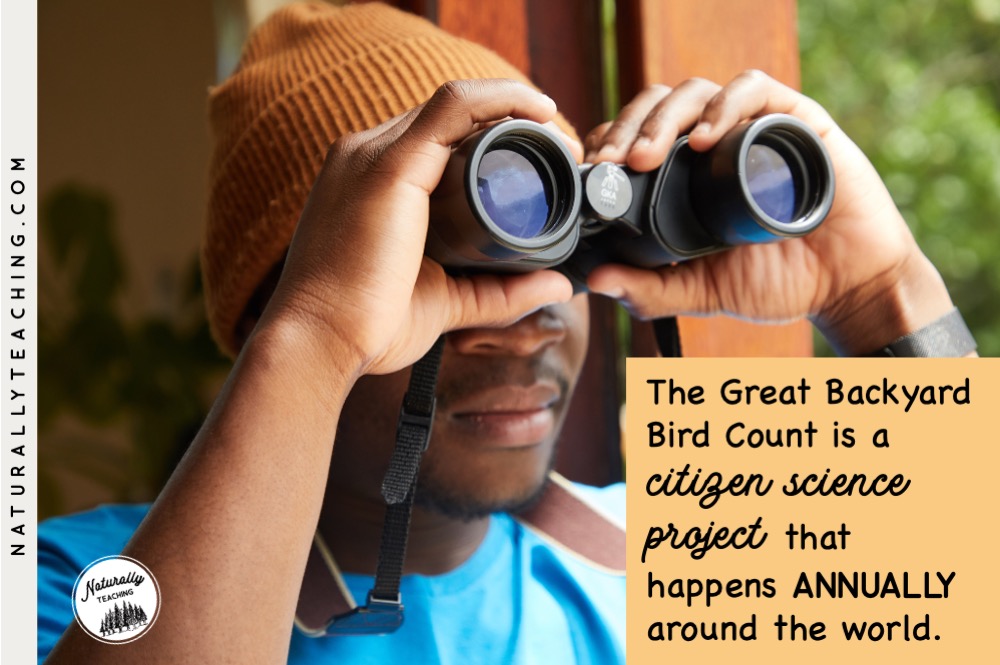
The goal of this project is for the world to come together for four days in February to count birds and report them to eBird to help scientists better understand global populations before the annual spring migration. How does this relate to your students? Citizen science projects give your students a chance to truly get involved with the science community in a fully-engaged and meaningful way. This project in particular can be completed at any location and with relatively few materials.
The Great Backyard Bird Count takes place annually over the course of four days in February, a set of Friday through Monday dates. The best way to know what the dates are for this year is to check birdcount.org. The four days typically fall around the middle of the month with previous years including dates such as February 18th-21st, 2022 and February 12th-15th, 2021. This set of four days will allow you two different opportunities to count with your students if you follow the traditional Monday through Friday calendar.
Counting must occur during one of the four scheduled days listed on the official Great Backyard Bird Count website. You can begin entering your data at midnight local time on the first day of the count but the data can only be collected on one of the four scheduled days of the Great Backyard Bird Count. In order for your data to count toward the project it must be submitted by March 1st, so make sure to set aside time to report your sightings through eBird or the Merlin Bird ID App.
So, how can you and your class get involved? There are a few easy steps that you will need to take. According to the official Backyard Bird Count website, the instructions for participation include:
Identifying all the birds you see and hear may seem intimidating at first, but I have some tips and tricks for you later in this article to make it feel more approachable. You can look forward to reading about how to find a regional bird checklist for your area, picture books to introduce birding in a simplified way, and how technology can help you and your students. Fear not, you can do this!
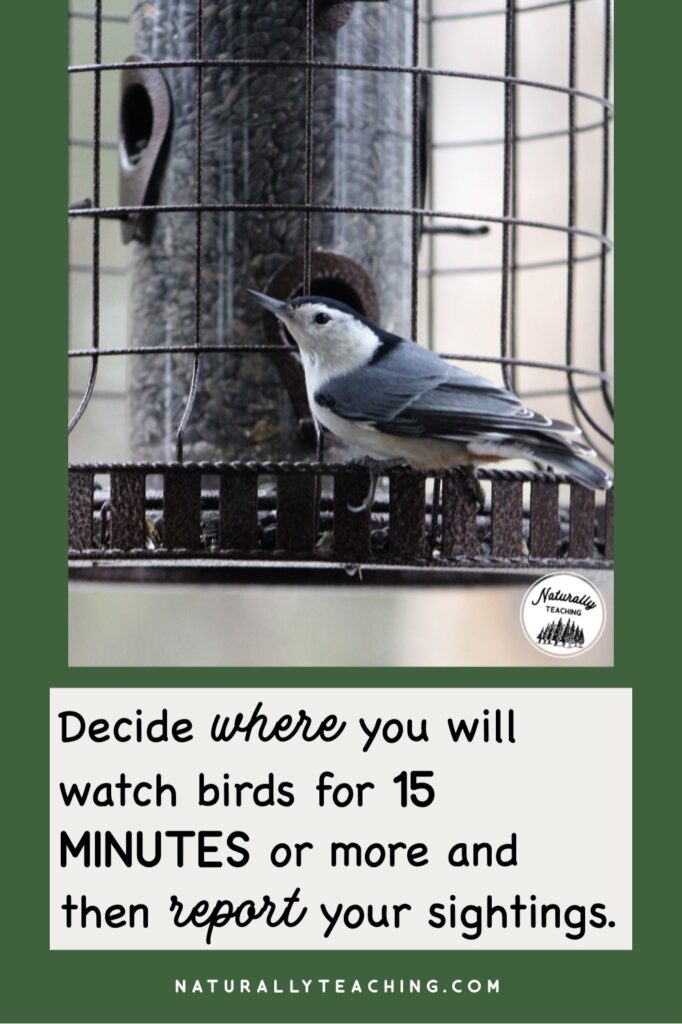
As mentioned a few times, the Great Backyard Bird Count uses eBird as the system for reporting your findings. If you are planning to use eBird to report your class’s sightings, the official Backyard Bird Count website suggests the following steps to follow for group counts:
Alternatively, if you take a glance at eBird and realize it’s not your preferred reporting method, you can use the free Merlin Bird ID app. This app is connected to eBird and will report your sightings to the project for you automatically.
eBird is one of the largest biodiversity-related science projects in the world with hundreds of partner organizations, thousands of regional experts, and hundreds of thousands of users. This project relies on birdwatchers to submit their sightings, photos, and bird calls that they find in relation to where they are birding, how they are birding, and when they are birding.
More than 100 million sightings are reported annually making eBird a reliable and vast database. eBird has been used to power projects like the Merlin Bird ID app, ShorebirdViz, Dark Ecology, and more. Conservationists and biologists worldwide use eBird data to help make hundreds of conservation decisions and publish peer-reviewed papers each year. By participating in the Great Backyard Bird Count, your students will be contributing to a data set that helps scientists protect the Earth’s resources and environment.
Making an eBird account is easy and free and can be used to report bird sightings year-round. Follow these steps to set-up an account to report your class’s data for the project.
Go to eBird.org and click on the green “Create Account” button in the top right-hand corner of the home page.
You will be prompted to fill in a form with 1) your first and last name, 2) a username and a password, and 3) your email address. If you are creating an account that will only be used for your classroom, feel free to use a fun class name instead of your first and last name. If you plan to use this account personally over the rest of the year, make sure to use your credentials.
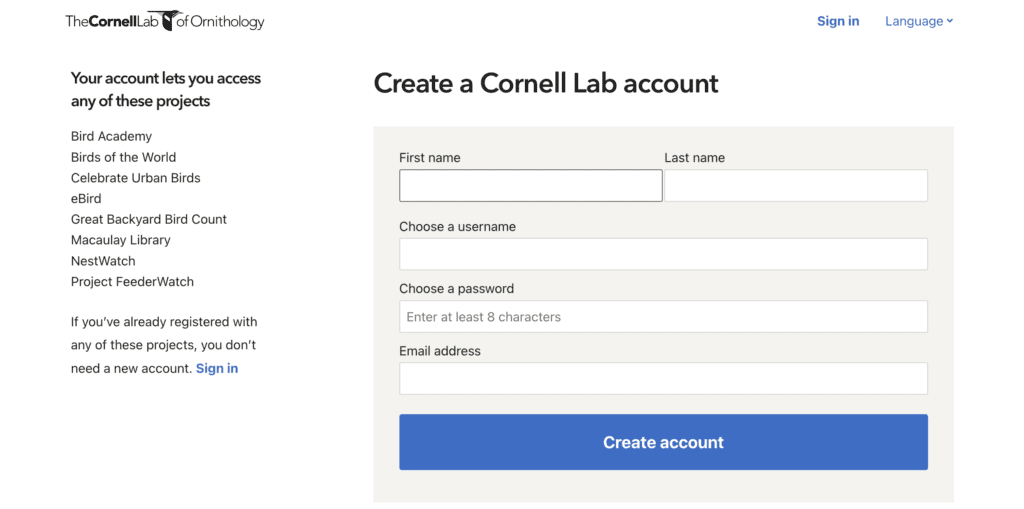
You will get a prompt that lets you know that a confirmation email will be arriving to your inbox and to click the link to activate your account. Navigate to the inbox of the email that you used to set up your account and click on the activate account button.
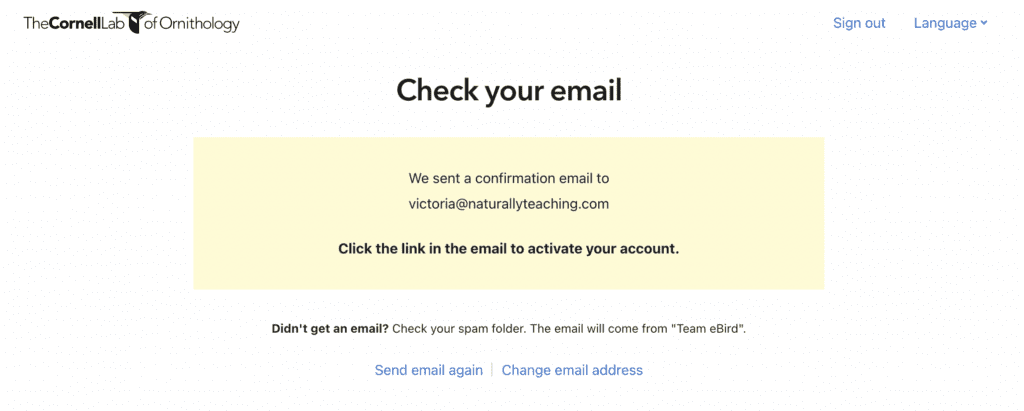
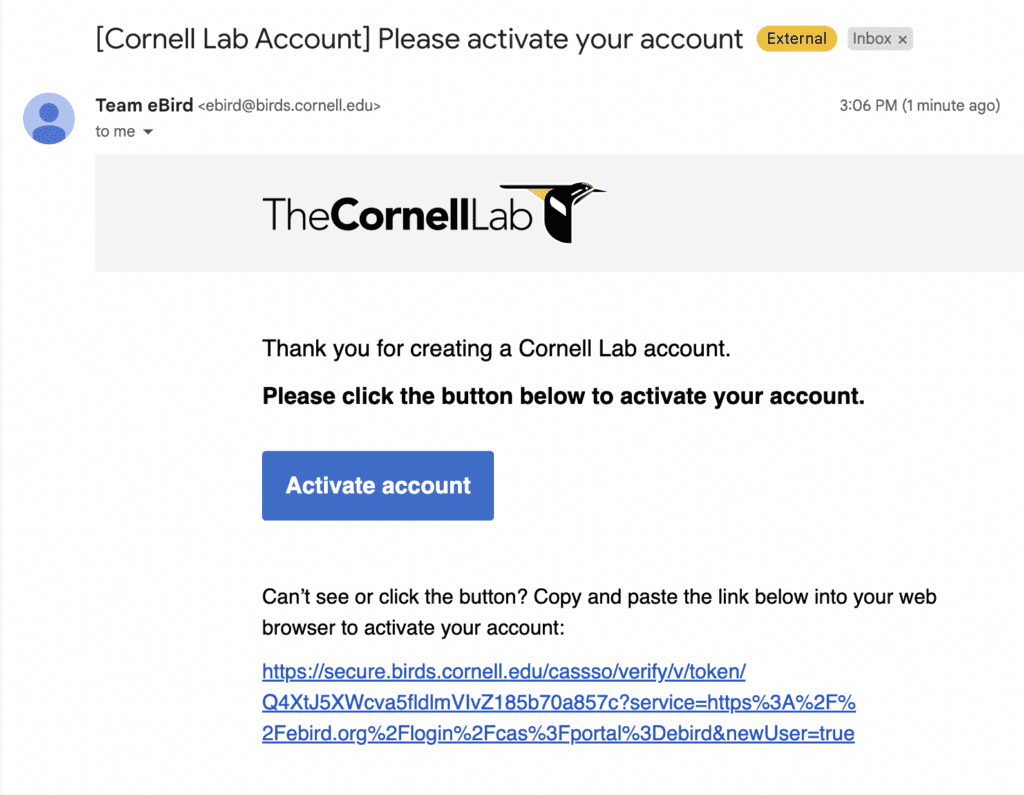
You will then be prompted to sign in with the username you selected as well as the password. You will be thanked for activating your account and then it will prompt you to fill in a few more pieces of information. The mailing address form is optional and can be skipped. You will be asked to set your eBird Preferences which will need to be saved and accepted by you, the user. You can choose to view bird species by common name, scientific name, or both. If you do not have a science background, select common name for your preference. If you want your class’s information or your personal information to remain anonymous, there are options for that. After you have submitted your preferences, you are good to start reporting!
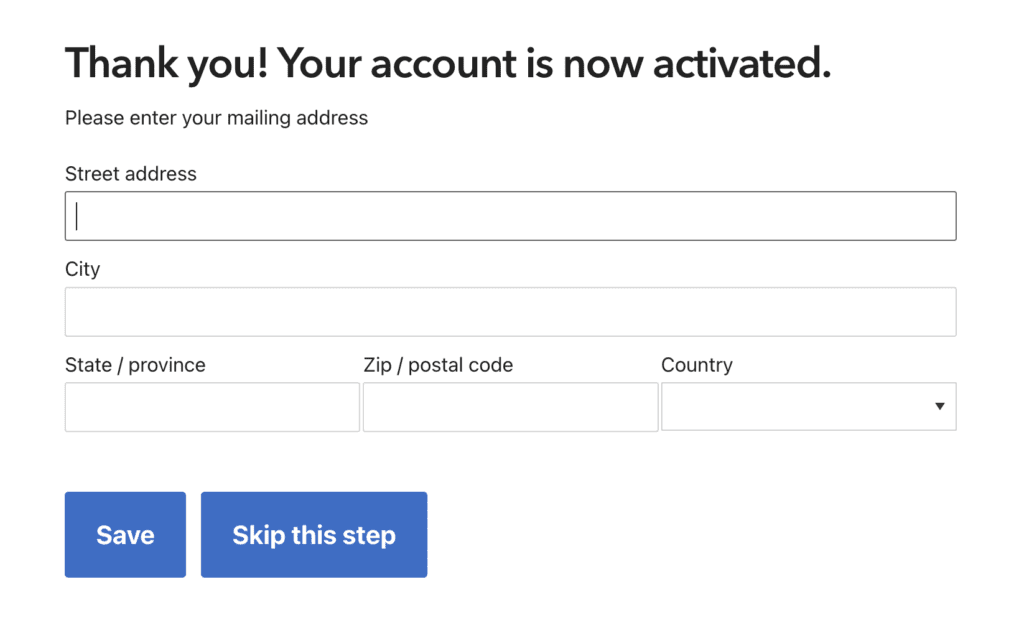
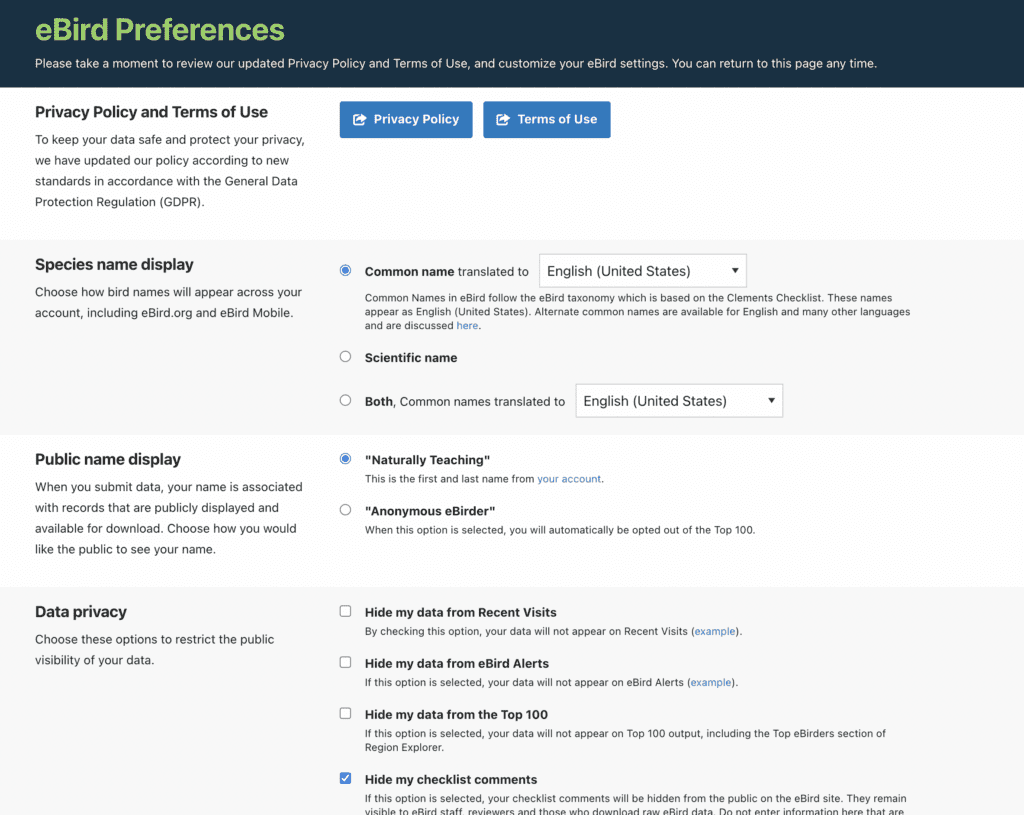
One of the wonderful benefits of eBird being used to power the Great Backyard Bird Count is that eBird has regional bird checklists that you can print and use during your bird counting experience. Not knowing what birds live in your area can make birding intimidating. Use the eBird checklist to help you start to research and learn about the birds that have been historically spotted in your community.
Prepare for the Great Backyard Bird Count by following these screenshots to get your regional checklist.
1. Go to ebird.org/explore and enter your region
2. Click on printable checklist and print
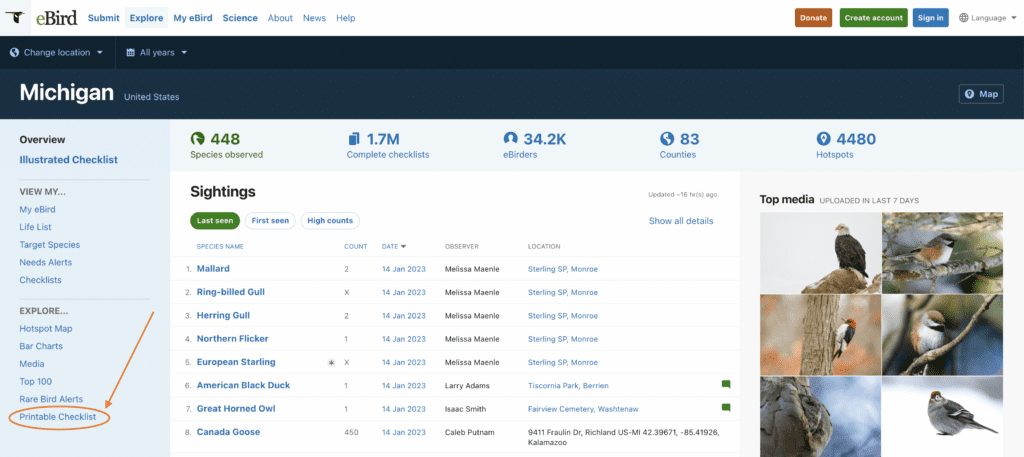
When entering your region, try to get as close to your city as possible. Try entering a couple of local options if your specific city doesn’t pop up as a suggestion. Some cities have very dedicated birdwatchers and have a checklist all their own. Other cities do not have enough data collected to warrant a unique checklist. Entering the entire state could provide you a much larger diversity of species than your community actually sees, making your range of birds much greater than what you’re likely to see around your school.
These checklists will also include each family of birds spotted within your region. Not all birds will visit bird feeders. When you look at your checklist, you can ignore the Grebes, Cuckoos, Nightjars, Swifts, Rails/Gallinules, Cranes, Loons, Cormorants/Anhingas, Pelicans, Herons/Ibis, Larks, Martins/Swallows, Chats, Waterfowl, Shorebirds, Kingfishers and Gulls/Terns/Skimmers. If birds feed from water they typically won’t end up at your feeders.
Some birds on your checklist to pay particular attention to would be Nuthatches, Woodpeckers, Sparrows, Finches/Euhponias, Tits/Chickadees/Titmice, and Jays. Most of these birds can be attracted to your bird feeding station with platform feeders, tube feeders, and suet feeders containing black oil sunflower seeds, peanuts, and suet cakes.
The Great Backyard Bird Count is a fantastic project to get involved with since the instructions for participation are pretty straight forward and basic. To read the instructions first-hand from the official Great Backyard Bird Count website follow this link. For a quick break-down, continue reading.
Who: You and your class. You could also participate in this project on the weekend with your family or friends who also love birds.
What: Counting birds for at least 15 minutes or more. Keep track of the kinds of birds that you see or hear, how long you watched, and how many people were watching.
After you have counted birds you will report them to the Great Backyard Bird Count project using either the Merlin Bird ID app, the eBird Mobile app, or the eBird web page. Data needs to be submitted by March 1st for observations made during the scheduled four days of the bird count.
Where: Your bird feeding station you set up outside your classroom windows, along the sidewalk near your school, at home on the weekend, or anywhere you can find birds.
When: A set of four scheduled days in mid-February (check the official website for exact dates this year).
Why: To contribute to the wild bird population surveys happening world wide to help scientists understand pre-migration populations. This data could later help scientists discover patterns, population declinations, and support conservational movements.
Birding doesn’t have to be stressful and can be really fun for you and your students. If you’re unsure about how to introduce the topic of birding, consider using a picture book. There are a few picture books out there that are helpful in breaking down bird identification into digestible tips as well as introducing the benefits of citizen science for bird populations and conservation.
Crow Not Crow by Jane Yolen and Adam Stemple. This picture book introduces bird identification in the context of whether the bird is a crow or not a crow based on observable characteristics. This simplified way to view bird ID can help you and your students understand that you don’t need to know everything about birds and how they look in order to be able to identify them.
Counting Birds: the Idea That Helped Save Our Feathered Friends by Heidi E.Y. Stemple focuses on the historical beginnings of the Christmas Bird Count. Although its focus is on a different bird count than the February Great Backyard Bird Count, it is a great introduction to your students as to the power of citizen science projects and their ability to help protect nature.
Bird Count by Susan Edwards Richmond is a fictional story about a child participating in the Christmas Bird Count. Again, even though it is about the Christmas Bird Count and not the Great Backyard Bird Count, this story can show how children can be involved with the citizen science efforts and how a bird count can work. Since the main character is a girl that looks to be about 4th or 5th grade, this story could be relatable to your students.
For an information-packed book, read Snowy Owl Invasion by Sandra Markle over the course of multiple days. This book focuses on a crowd funded project called Project Snowstorm. This project is more high-tech than the Great Backyard Bird Count since it uses GPS transmitters and expert bird banders to tag snowy owls. Project Snowstorm helps scientists study and learn about snowy owl migrations. People can participate in this project by submitting photos of snowy owl sightings to eBird.
Most of what you need to participate in the Great Backyard Bird Count with your students is a good attitude, open eyes, and group participation. Everything else you may have or acquire is just icing on the cake. Read on for ideas on creating a bird feeding station, field guides to help with identification, and scientific tools for data collection.
Many teachers choose to participate in the Great Backyard Bird Count by putting up a bird feeding station outside of their classroom windows or another set of windows they have access to. I am not a proponent for teachers using their own money to supply materials for their classrooms, so if you don’t have access to bird feeders that belong to your school already, consider asking local pet stores or hardware stores for donations of bird feeders and bird food. Many local pet stores and hardware stores have leftover bird feeders when the summer season has ended and they are willing to donate them for educational purposes. Alternatively, you could ask for financial help from your school’s PTO.
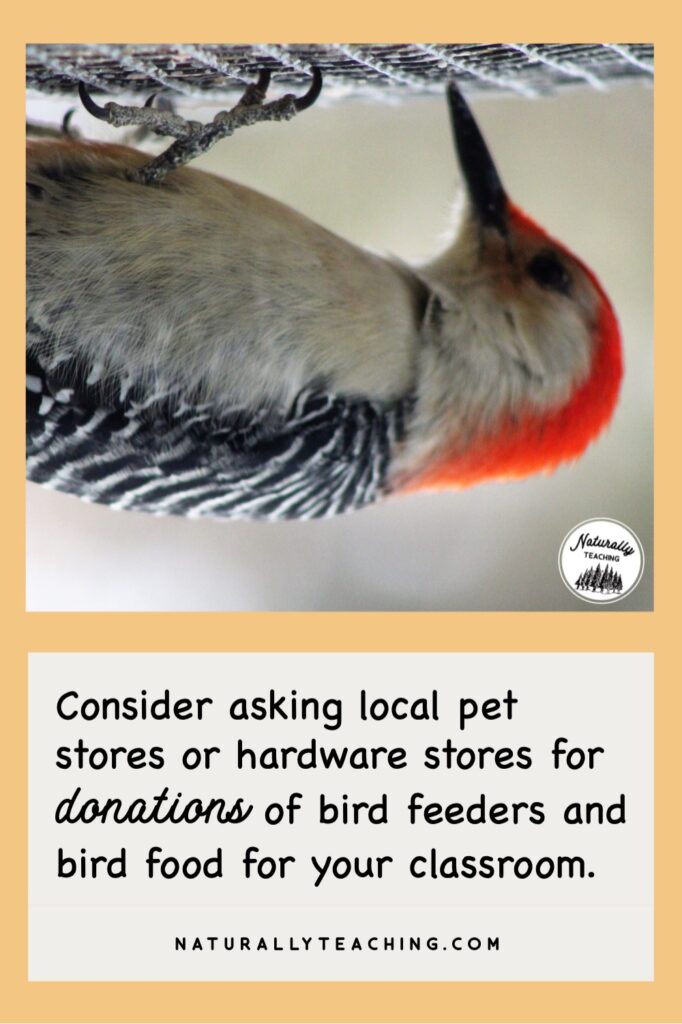
To get the best bang for your buck, consider using suet feeders and platform or tray feeders. These two types of bird feeders will bring in a large diversity of bird types whereas other feeders, like thistle feeders, may only attract one or two species. Suet cakes can be purchased pretty inexpensively to place in your suet feeder or you could make your own. Use black oil sunflower seeds in your platform feeders to appeal to songbirds of all kinds.
Identifying birds can be extremely intimidating, but field guides are a great place to start your identification efforts. Again, instead of spending your own money to supply these books for your classroom, pop into your school or local library and see if there are any you could borrow for the project. Your students will love looking through the pages at the beautiful pictures, reading the information about the birds, and identifying the birds they see near your school.
Some field guides that I suggest looking for include:
You could also keep your eyes out for field guides that are specific to your region or state such as:
There are also child-friendly field guides that you could look for including:
If you’re struggling to find enough physical bird guides for your students to either use as individuals or in partners, there are some online resources that could be helpful as well. If you have Chromebooks, iPads, or other devices that give your students access to the internet, you could have them visit AllAboutBirds.org, Audubon.org, or eBird.org. These sites provide identification help as well as plenty of information about each species.
In addition to a bird feeding station and field guides, there are some scientific tools that could help your students while they are participating in the Great Backyard Bird Count. As a reminder, these are just bonuses and are not necessary to be able to participate in this citizen science project.
To help your students see the birds in greater detail, binoculars are a helpful scientific tool to supply your students. If your school has access to binoculars, even just a couple of pairs, these tools can get your students really excited about their counting experience as well as help them be more accurate in their identification of field marks.
Another tool that could come in handy would be a digital camera. The benefits of using a digital camera while you’re counting birds is to capture a moment in time that can be looked at later when you have more availability. This could be helpful for counting large flocks of one species of bird, for enlarging the field marks on a tricky bird, or documenting a rare bird and reporting it to eBird for scientists.
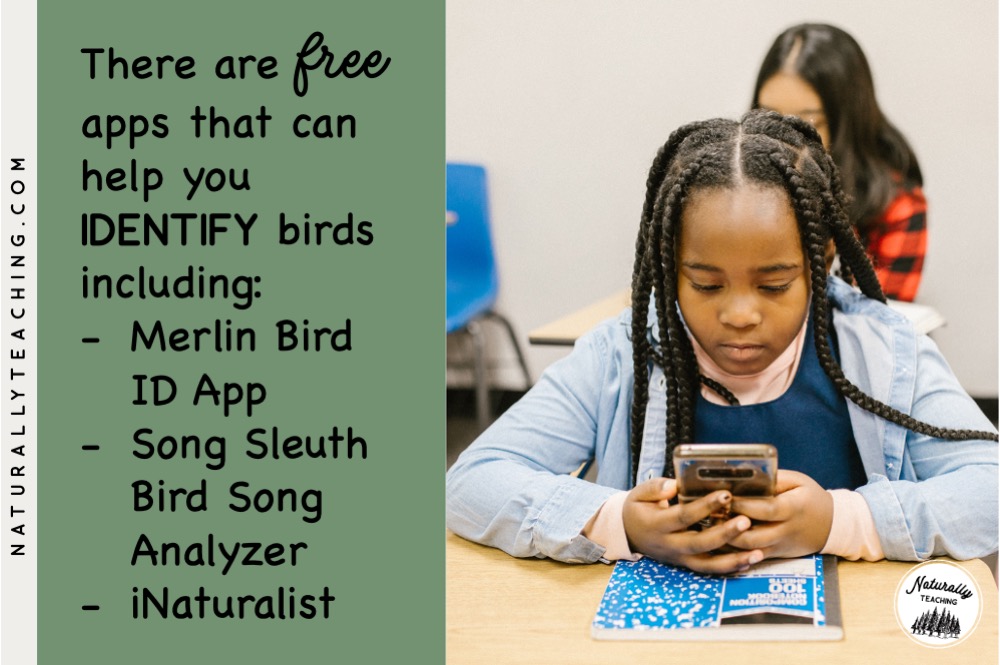
There are some free apps that can be helpful with identification, especially if you and your students are new to birding. Using an iPad (with iOS 14 or newer), an iPhone, or an Android phone, you can download the Merlin Bird ID app. This app asks you 3 simple questions about the unknown bird in order to help you identify it. It starts with what size the bird is (in relation to well-known birds), what the three main colors of the bird are, and what the bird was doing. After you answer these three questions the app will give you suggestions of birds that have been reported in your area that fit the answers you provided. You can also use this app to identify bird songs and calls! Song Sleuth Bird Song Analyzer is another free app that can help you identify iconic bird songs of 200 of the most common land birds in North America. iNaturalist is another online citizen science project that uses non-scientists to report sightings and then naturalists, nature lovers, and scientists can confirm or suggest an identification.
There are many different types of activities that you can do to celebrate and prepare for the Great Backyard Bird Count. Some of these suggested activities could work for elementary students of all ages whereas some may be suggested for specific grade levels.
Your class will be most successful participating in the Great Backyard Bird Count if your students are familiar with the species of birds they may see at your bird feeder. Consider giving your students a chance to create a poster for bird species in your area that tend to visit bird feeders. Start by printing the eBird checklist for your region (not sure how? Go back and visit the Great Backyard Bird Count checklist section of this article). Assign each of your students a bird species from this list and let them use either field guides or the Internet to research their bird and make a poster. Your students should include the bird species’ name, some information about how they act at bird feeders (e.g. eat from a feeder, eat from the ground, etc.), and a picture of the bird with color. After they have made their posters you can hang them up around the windows that you will be counting from. These will act as quick references for identification while they are helping to count the birds.
If you have early childhood students, practice colors and counting while watching your bird feeding station. This could be an activity done several times a week leading up to the bird count in mid-February. Start with what colors your students see on the birds and how many of each color they see. After you’ve done that a couple of times you could start to use labeled pictures of birds to identify what birds they are seeing. Sometimes counting will be challenging since there will be a lot of birds; sometimes there won’t be as many. Giving your early childhood students multiple opportunities to practice their color identification, counting, and bird identification will be fun, engaging, and will build their confidence and observation skills.
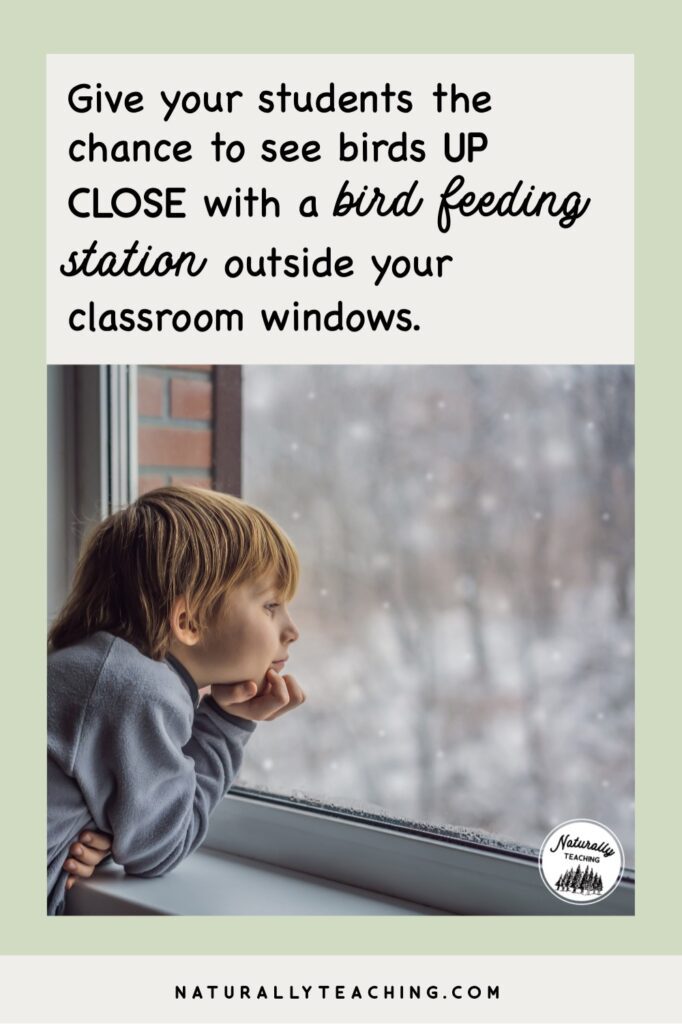
If you’re working with older students that are learning about heredity, have them group birds based on observable characteristics. Some birds will be easy to place together like Blue Jays since juveniles and adults look similar. Other birds will be trickier, like Northern Cardinals that are sexually dimorphic – this means that the male and the female are different colors but can be identified by their same shape and color bill and feet. This exercise will help them practice their bird identification but will also develop their observation and critical thinking skills.
Break free from the science activities and use the birds to work on your students’ writing skills. Birds can be inspiration for narratives, stories, fables, or poems. It could also be a great time to rope in fantastic works of literature that are related to birds that can help fulfill your reading standards as well.
Aside from making posters, get your STEAM on with your students and use the birds as models for drawings, paintings, or scientific diagrams. This will help students of all ages develop their fine motor skills as well as their observation skills. If you live near a university or natural history museum, get into contact with someone to see if you can borrow bird study skins so that your students can have the models up close and most importantly, still.
If you’re looking for already developed lesson plans and accompanying student papers, check out my Citizen Science Projects for 5th Graders: The Great Backyard Bird Count on Teachers Pay Teachers. It includes activities such as researching bird food types and bird feeders, writing a proposal for which bird food and bird feeders should be used for the Great Backyard Bird Count in your classroom, a bird ID poster paper, a practice bird count data collection sheet, a bird count data collection sheet, a class results data recording sheet, graphing the class results sheet, and an opportunity to evaluate the project through an opinion writing.
The Great Backyard Bird Count is one of those experiences you can give to your students that will affect them for the rest of their lives. They will learn about the birds seen near your school and interesting facts about the different species. Your students will get to identify organisms by their observable characteristics, both on their body and by their behavior. They will learn the value of hard work through the various preparations for the project and for the diligence it takes to implement all of the steps. Your students will see how their actions make an impact as their scientific data is reported to the science community… The list goes on and on, and the wonderful thing is, you are the one that provided them this opportunity! Way to go teacher, you are making a HUGE difference!
Affiliate Disclosure
I only endorse things that I’ve personally used, come highly recommended by trusted peers, or I’ve done extensive research on. As an Amazon Associate, I may earn commissions from qualifying purchases from Amazon.com. This is at no extra cost to you, the commission is covered by the company.
I am recommending products that I think will be genuinely helpful and useful, and not because of the small commissions that I receive. Please only purchase items if you believe that they will help you achieve your educational goals. If you’d like to learn more, check out my disclaimers page.
Do you have any amazing experiences participating in the Great Backyard Bird Count with your class? Describe them in the comments section to inspire a fellow elementary teacher to take action!
Wondering how to take your students outside to count birds? Check out the article “Outdoor Education: How to Use Nature to Improve Your Science Studies”
4 thoughts on “The Great Backyard Bird Count: How to Take Part for Elementary Teachers”